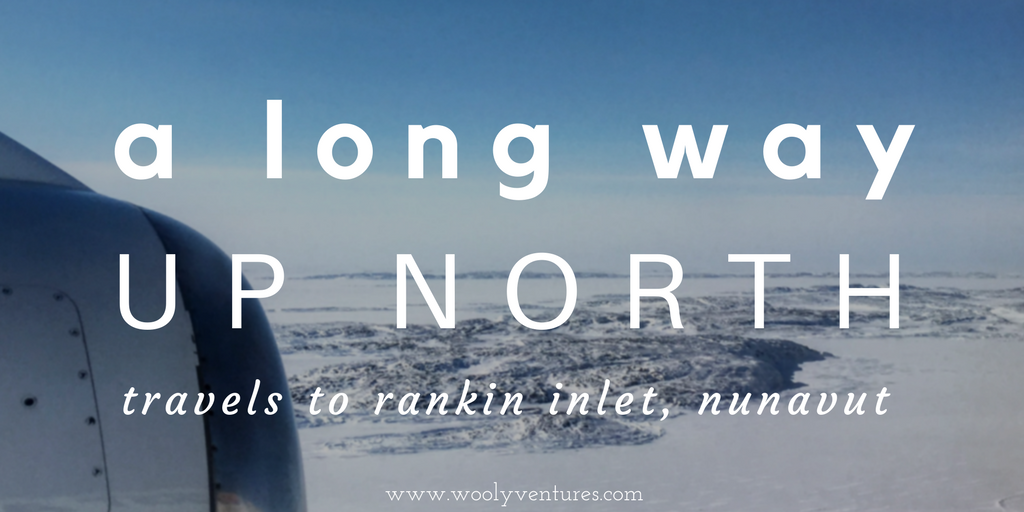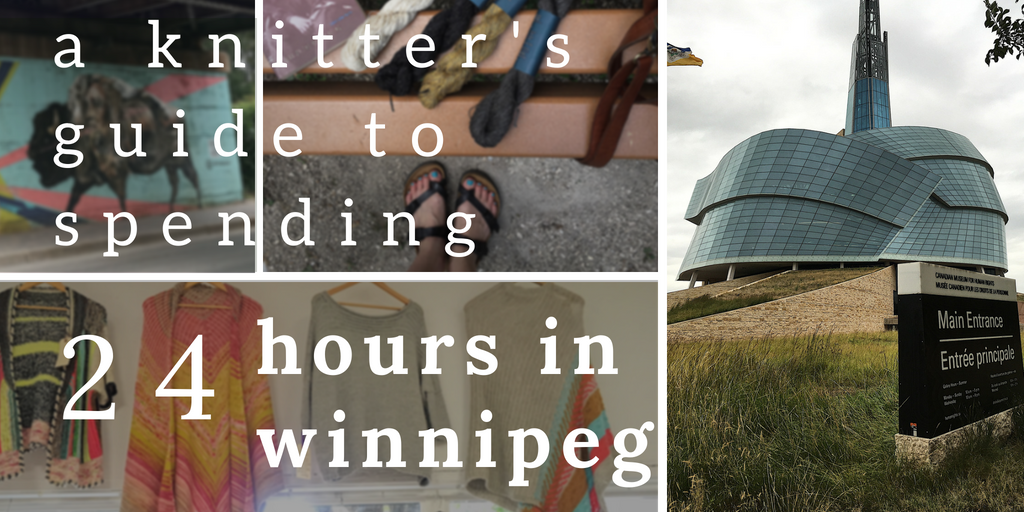These past couple of weeks I’ve been a bit absent on the blog. I think this may even have been the longest I’ve gone without posting in over a year! Luckily, I have a good excuse. I was away on an adventure (a work related adventure, but an adventure nonetheless).
I traveled the farthest North I’ve ever been – all the way to Rankin Inlet, located just south of the Arctic Circle. Up here, you have to look South to see the Northern Lights. Plane tickets to this part of the country cost around $3,000 CAD round trip, which explains why I have never considered visiting this part beforehand. At this price, it’s almost cheaper to buy an around the world ticket.
Most of my time was spent either working or in camp. And the cold weather meant I didn’t exactly want to brave the elements to take pictures. (while I was there it got down to -47 degrees Celsius with wind chill, although the others said I had it “lucky” compared to the week before when it got down to -65). Oh, and there was always the small (but existent) risk of coming across a polar bear. For those down South, no, they are not the cute and cuddly creatures you may believe them to be (neither are black bears, for that matter, but that’s another story). Still, in my short time in Nunavut I was granted a peek into Inuit culture, filled with amautis, crochet and Northern Lights.
The amauti
One of the first things I noticed when stepping off the plane was the beautiful jackets that the women wore. They looked to be handmade, as each women’s jacket was unique: a little band of black lace here, an extra fur cuff there. Many times, the fur was died bright and bold colours: beautiful blue, red and pink fur lined the woman’s hoods. I watched a woman pull up to the airport entrance on her snowmobile, wearing a coat that had an extra large fur-lined hood. As she pulled it down, I noticed the baby on her back, entirely sheltered from the cold by her functional and fashionable hood. Genius!
Little did I know, but these coats had a name. They are called amautis. Based on historical evidence, they are a traditional garment used by Inuit women for at least hundreds of years in the Arctic region. Babies of up to two years of age can be kept warm enough to only need their indoor clothes, if inside the amauti. The amauti‘s shoulders are made to be extra loose so that the baby can easily be passed from the back to the front depending on its needs, without ever having to leave the comfort and warmth of the amauti.

For those who speak French, there is an excellent article to be found on La Presse explaining more about the history and culture of the amauti, and can be found here.
And for those of you who don’t, here is a translated section from the La Presse article:
Twenty hours of work to sew an amauti.
Fall of 1999. Donna Karan, New York designer of DKNY, sends her buyer to the west of the Arctic. The operation’s mission: bring back traditional Inuit clothing – specifically, the amauti, a parka that allows women to carry the baby on their back – for inspiration. In order to stop this “twisting of Inuit culture”, the Pauktuutit Inuit Women’s Association denounces the designer in the media. DKNY decides not to release any amauti inspired looks in their next collection. Even today, “most people in the North make their own amautis and parkas or have them made by someone in the family”, says Victoria Okpik, designer of Nunavik Creations. Sewing workshops open in many of the villages. The older women teach the younger ones how to make them”.
I felt awkward and out of place to ask a complete stranger if I could take a picture of her jacket, but perhaps on my next run up (yes, I will be returning!) I can work up the courage. I would love to share with you guys the beautiful colors and creativity I saw in so many of the women’s amautis!
I found it incredibly inspiring to see so many beautiful designs, knowing that each of them were handcrafted by the women themselves, or by someone they knew. It would be amazing to see this kind of ‘handcraftivism’ shape the fashion and trends we see down south as well. Making something useful for ourselves or for others in our community, using your own two hands, is one of the most empowering and rewarding things we can do for ourselves. This article on Inuit fashion touches on this topic.
The Pang Hat
On the plane, I was excited to notice a woman crochet, but didn’t think too much of it, until I realized that many of the men were wearing crocheted hats! These hats weren’t the typical beanies you would see in North America. They were more square shaped, and featured beautiful geometrical motifs on the side. Again, I let my shyness get the best of me and didn’t take any pictures, but I promise to take some on my next trip up to share with you!
Here is the best example I could find on the web of a typical Inuit men’s hat. While in Nunavut, I didn’t notice any of the hats sporting a tassel, although every picture on the web seems to has one. Maybe it’s a regional difference?

I even managed to find a free Ravelry pattern to make your very own Pang hat here.
Pang hats are traditional hats worn by Inuit men to go hunting, and are traditionally made using wool. They are said to originate from a region in Nunavut called Pangnirtung, also referred to as “the Switzerland of the Arctic”. I mean, just look at those mountains!

Rankin Inlet, however, is more known for their blizzards than alpine hiking. They hold the record for having the longest duration blizzard in Canada, at 7 days and 5 hours.
What it means to be a Northerner
I came across this article, which features an outsider’s perspective on what it means to be a Northerner. My vision of the North was just a small taste of a different lifestyle. I stayed in camp, and wasn’t able to stay in town, but had some fascinating discussions with an Inuit while working. He was incredibly proud of his culture, and told his coworkers tales of the traditional way of life, which is very quickly changing.

Down in the South (and by South, I mean anything south of the tree line), many of us have a cloudy, unrealistic view of what life is like up North. We imagine polar bears, Northern Lights, and igloos, but have no real connection to the Northern lifestyle, as (due to the steep price for a plane ticket) we have never even visited this part of our country.
I heard tales about young boys proudly killing their first caribou at the age of ten, of traditional igloos still being made on remote hunting trips. Of ice fishing and snowmobiling derbies. Of how snow can be rubbed on skin, to prevent frostbite (say whaaat?). The native Inuktitut language was also spoken on the plane, in addition to English and French, to explain the safety features. I wonder when Duolingo will be adding Inuktitut to their language-learning app …
I can’t wait to go back and explore more of this lesser known part of Canada, and maybe even learn a word of Inuktitut or two!




